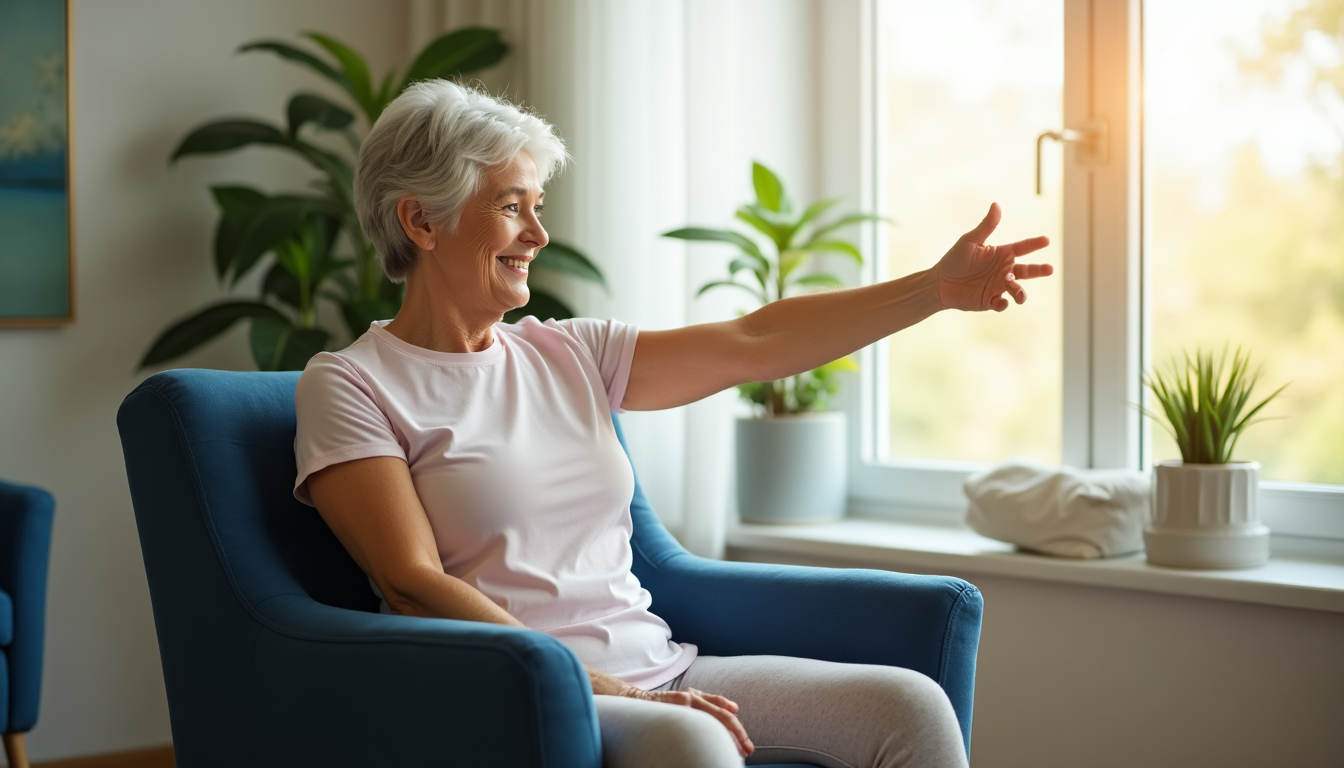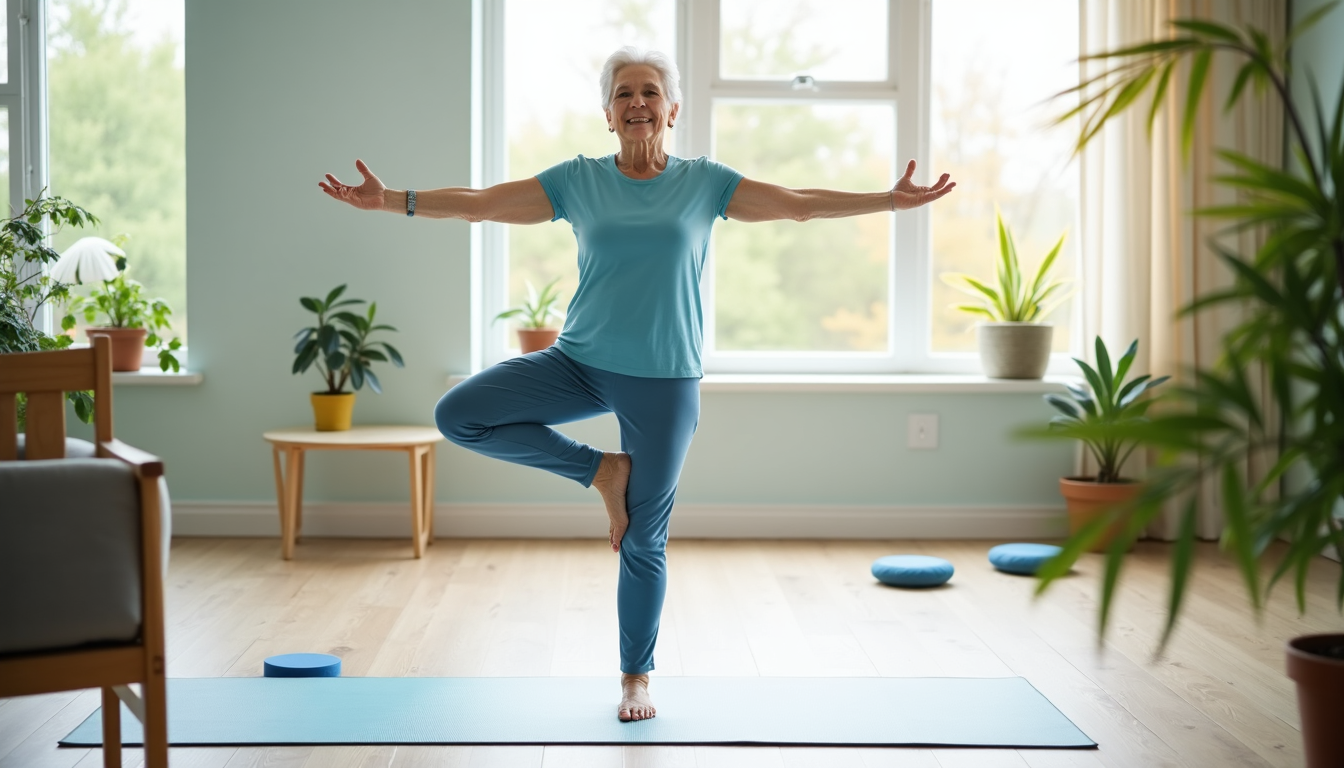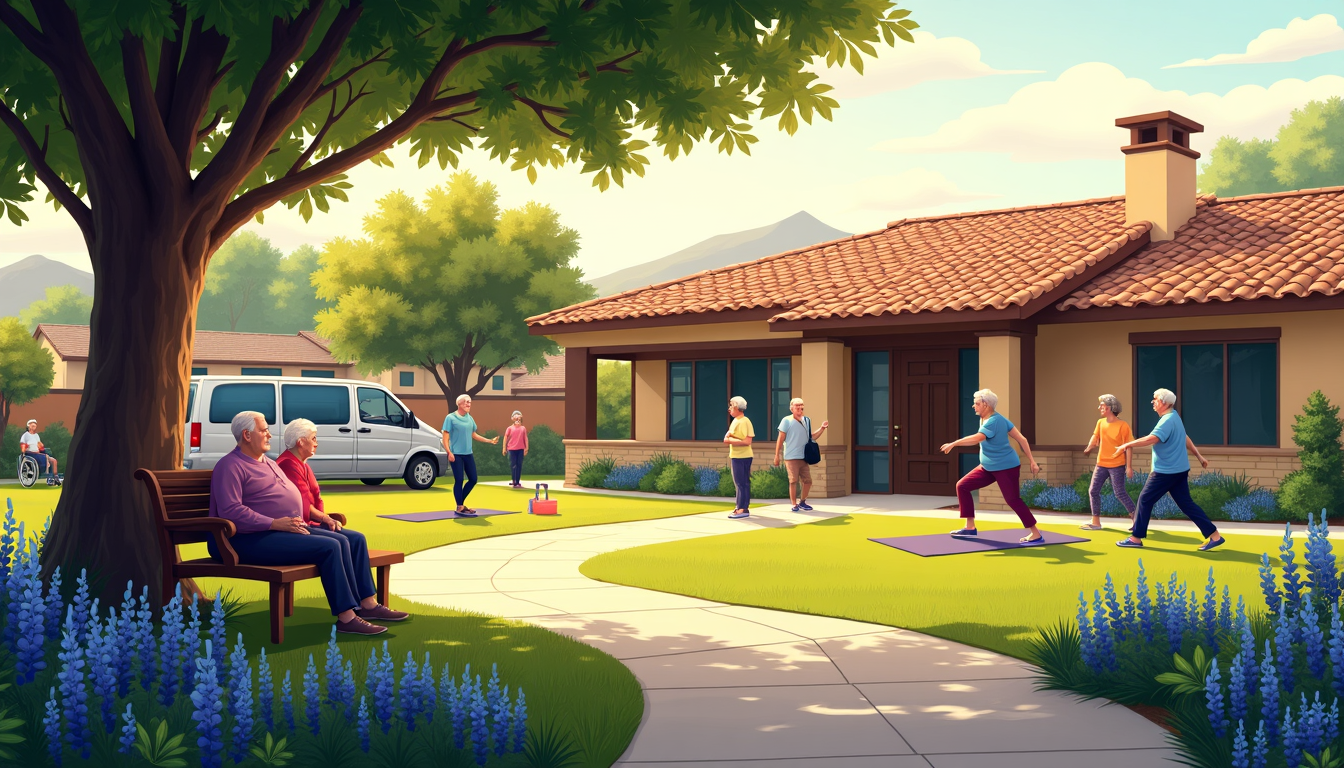Ring in Care: Daily check-in calls for seniors and loved ones
Get StartedGardening for seniors offers a multitude of benefits, both for mental and physical health. It acts as a source of cognitive stimulation, provides opportunities for social interaction, and imbues a sense of purpose to their daily activities. Emphasizing adaptive techniques alongside health and safety considerations enables seniors to enjoy the therapeutic rewards of gardening without strain.
Incorporating elements such as raised garden beds, garden tools specifically designed for ease of use, and selecting low-maintenance plants can significantly enhance the gardening experience. This guide aims to outline the essentials in creating a safe, enjoyable, and flourishing garden space, from selecting the right tools and equipment to exploring the joys of container and indoor gardening.
Assessing Your Garden Space
Assessing the garden space is a critical first step for seniors embarking on gardening. It involves considering several factors to ensure the garden is both enjoyable and manageable:
- Raised Garden Beds:
- Benefits: They minimize bending, allow for better pest control, and offer an opportunity to customize soil types.
- Specifications: Ideally, these beds should be 24-30 inches high and about 4 feet wide, making them accessible without the need to stretch or strain. Cedar timber is recommended for its durability and natural resistance to rot and pests.
- Maintenance Tips: Ensure good drainage by adding holes and a layer of rocks at the bottom. Control weeds through manual removal or organic herbicides.
- Garden Layout:
- Accessibility: Incorporate wide, level pathways free of obstacles, and consider the placement of raised beds and comfortable seating areas to reduce the need for reaching or stretching.
- Practicality: Position frequently used plants and tools within easy reach. Assess the location, local climate, and soil type to select appropriate plants. Consider sunlight requirements, space, and maintenance needs like watering, pruning, and fertilizing.
This approach not only helps in creating a garden that is easier to manage but also enhances the enjoyment and health benefits gardening provides to seniors.
Choosing the Right Tools and Equipment
Choosing the right tools and equipment is crucial for seniors to make gardening a comfortable and enjoyable activity. Here’s a breakdown of essential gardening tools and aids that cater to the specific needs of older gardeners:
- Ergonomic Tools:
- Trowels, Cultivators, and Transplanters: Look for soft grips and lightweight designs to reduce hand and wrist fatigue.
- Pruning Shears with Ratchet Mechanism: These require less effort to cut through branches thanks to the ratchet mechanism that multiplies force.
- Long-Handled Tools: Including trowels, cultivators, and weeding forks, these allow gardening without bending over, minimizing back pain.
- Gardening Aids:
- Garden Kneelers and Stools: Offer stable surfaces for working at a comfortable height, with some models featuring padded seats and built-in tool storage.
- Wheelbarrows and Garden Carts: Facilitate the transportation of gardening materials without heavy lifting. Options include motorized versions for ease of use.
- Watering Wands: Long-handled tools for watering plants effortlessly. Adjustable heads cater to different watering needs.
- Protection and Comfort:
- Gardening Gloves: Ensure gloves have padded palms and flexible fingers for a snug fit, protecting hands from blisters and cuts.
- Padded Knee Pads: Provide extra cushioning for kneeling, easily worn over clothing and simple to clean.
- LED Grow Lights: For indoor gardeners, these mimic natural sunlight, extending the growing season and supporting plant health.
Selecting Low-Maintenance Plants
Selecting the right plants is essential for creating a low-maintenance garden that thrives, especially for senior gardeners. Here’s a guide to choosing plants that require minimal upkeep yet offer maximum enjoyment:
- Low-Maintenance Outdoor Plants:
- Flowering Plants: Lavender, Coneflowers, Marigolds, Zinnias
- Non-Flowering Plants: Hostas, Ferns, Ornamental Grasses, Succulents
- Shrubs and Trees: Redtwig Dogwood, Dwarf Crape Myrtle, Dwarf Spirea, Boxwood
- Herbs and Vegetables: Lettuce, Spinach, Beans, Peas, Tomatoes
- Plants with Sensory Appeal:
- Touch and Smell: Lavender, Lamb’s Ear, Chocolate Cosmos
- Taste: Lemon Balm, Mint, Basil, Ginseng
- Indoor Gardening:
- Low Light: Snake Plant, Peace Lilies, Spider Plants
- Bright Light: Tropical Hibiscus, Aloe Vera, Jade Plants
- Herbs and Fruits: Lemons, Cherry Tomatoes
Choosing native and perennial plants can further reduce maintenance by adapting better to the local climate and returning each year. Utilizing resources like the UC Master Gardeners program can provide valuable insights into plant selection and care. Remember to match plants with the gardening environment and the gardener’s experience level to ensure a thriving garden with minimal effort.
Raised Beds and Container Gardening
Incorporating raised beds and container gardening offers seniors a versatile and accessible way to engage in gardening, tailored to reduce physical strain and enhance the gardening experience.
Raised Beds:
- Accessibility & Comfort: Raised beds can be customized to heights between 24 and 30 inches, ideal for wheelchair users or those who prefer gardening while seated. The recommended width is about 4 feet, ensuring all plants are within arm’s reach.
- Advantages:
- Improved soil quality and drainage
- Reduced weed growth and pest intrusion
- Enhanced aesthetic appeal of the garden space
- Materials & Maintenance: Cedar timber is favored for its durability and resistance to rot and pests. Ensure proper drainage by incorporating holes and a layer of rocks at the bottom, complemented by self-watering systems for ease of maintenance.
Container Gardening:
- Flexibility: Suitable for seniors with limited space, container gardens can be placed on balconies, patios, or indoors. Containers on caster wheels enhance mobility and accessibility.
- Plant Selection: From herbs and vegetables to flowers that attract pollinators, container gardening allows for a diverse range of plants. Utilize large containers with good drainage and ensure they receive adequate sunlight.
- Benefits: Container gardens require less maintenance, eliminate heavy gardening tasks, and provide sensory stimulation through sight, smell, and touch, promoting relaxation and a sense of accomplishment.
Gardening Safety Tips for Seniors
Ensuring safety during gardening activities is paramount for seniors, particularly for those with mobility limitations or visual impairments. Here are tailored tips to create a secure gardening environment:
- Lighting and Pathways:
- Install automatic lights along walkways, entrances, exits, and outdoor areas to ensure safety and prolong gardening hours, especially beneficial for seniors with eye problems like cataracts, glaucoma, or macular degeneration.
- Ensure pathways are wide and smooth, free of impediments and tripping hazards, crucial for mobility devices such as motorized wheelchairs.
- Protective Measures:
- Sun Protection and Hydration: Wear protective clothing, apply sunscreen, stay hydrated, and time gardening sessions to avoid the midday heat.
- Overexertion: Start slow, warm-up, use proper body mechanics, take breaks, and alternate tasks to prevent overexertion. Utilize ergonomic tools that are easier to grip and soak hands in warm water before gardening if arthritis is a concern.
- Adaptive Strategies:
- Warm-Up Exercises: Engage in gentle stretching before starting gardening tasks. Change positions and activities every 20-30 minutes and rest in between.
- Environmental Adaptations: Use raised beds and container gardening to minimize bending and lifting. Choose plant spots with adequate light and water sources that are easily accessible.
Incorporating Indoor Gardening
Incorporating indoor gardening into the lives of seniors offers a myriad of benefits, from enhancing physical and mental well-being to providing a sense of accomplishment. Here are some creative and practical ways to get started:
- Vertical Gardens & Herb Gardening:
- Utilize vertical spaces for gardening, such as wall-mounted planters or vertical garden stands.
- Plant an herb garden on a windowsill or kitchen counter. Recommended herbs include parsley, chives, mint, rosemary, and basil. These herbs not only add flavor to meals but also bring greenery indoors.
- Terrariums & Indoor Flower Gardens:
- Creating a terrarium involves layering gravel, activated charcoal, moss, and potting soil in a glass container, then adding small plants like ferns and polka dot plants. This miniature garden can be a beautiful addition to any indoor space.
- For flowering plants, consider orchids, African violets, and Christmas cacti. Be mindful of pet safety by choosing non-toxic options.
- Hydroponics & LED Lighting:
- Hydroponics allows for the growth of plants indoors without soil, using nutrient-rich water. This method is efficient and reduces common outdoor gardening challenges.
- Pairing hydroponic systems with LED lights can extend the growing season, enabling year-round gardening. Starting with a smaller 17-inch light is recommended for beginners, gradually expanding as confidence grows.
In-home caregivers can play a crucial role in assisting with more physically demanding tasks, ensuring gardening remains a joyful and stress-free activity for seniors. Whether it’s repotting plants or setting up a new hydroponic system, the support they provide can make all the difference.
Conclusion
Throughout this comprehensive guide, we have explored the multifaceted benefits of gardening for seniors, highlighting how it can significantly enhance their quality of life both physically and mentally. From the joy of nurturing plants in raised or container gardens to the therapeutic value of engaging in indoor gardening activities, we’ve covered essential strategies for making gardening an accessible and fulfilling hobby. Practical safety tips and the selection of the right tools and low-maintenance plants further ensure that seniors can enjoy the pleasures of gardening with minimal strain and maximum joy.
The journey through gardening, tailored for seniors, demonstrates not just a hobby but a holistic approach to nurturing their well-being. As they adapt their gardens to their evolving needs, they also cultivate a space of growth, serenity, and vibrant life, mirroring the richness of their experiences. Encouraging further exploration and adaptation in the garden can continue to bring about a sense of achievement, connection to nature, and an enriched life, making every effort in their garden an investment in their happiness and health.
FAQs
What’s the Best Type of Garden for Seniors?
The most accessible gardens for seniors include stand-up beds, container gardens, and vertical gardens. These types allow for easier reach and can be combined to cater to the needs of elderly individuals.
Can Gardening Enhance Mental Health in Retirees?
Absolutely. Gardening has been shown to significantly boost mood and provide a sense of accomplishment. As seniors watch their plants grow and thrive, they experience an uplift in emotional well-being. Gardening offers a meaningful activity that involves nurturing and caring for plants, enhancing a senior’s sense of purpose.
How Does Gardening Benefit Older Adults?
Gardening encourages older adults to engage in regular physical activity, which is crucial for their health. It helps in preventing osteoporosis, reducing the risk of certain cancers, Type 2 diabetes, depression, and heart disease by ensuring they stay active.
What Are Some Specific Benefits of Gardening for Older Adults?
Gardening offers a plethora of benefits for older adults, including reduced blood pressure, opportunities for exercise, memory care, improved motor skills, social interaction, stress relief, and a stronger immune system.












